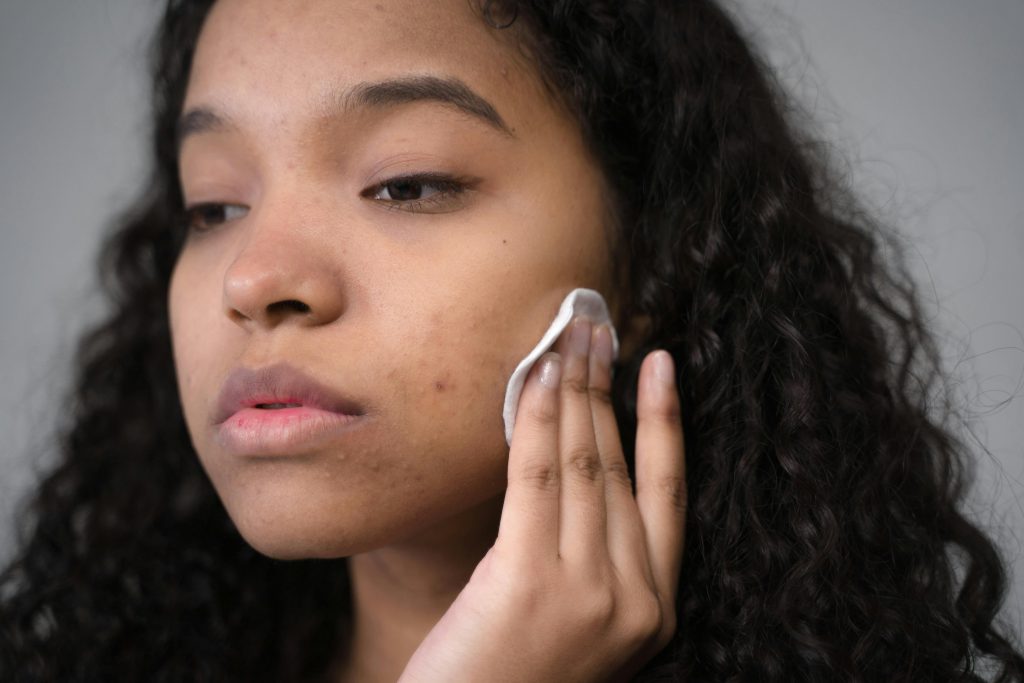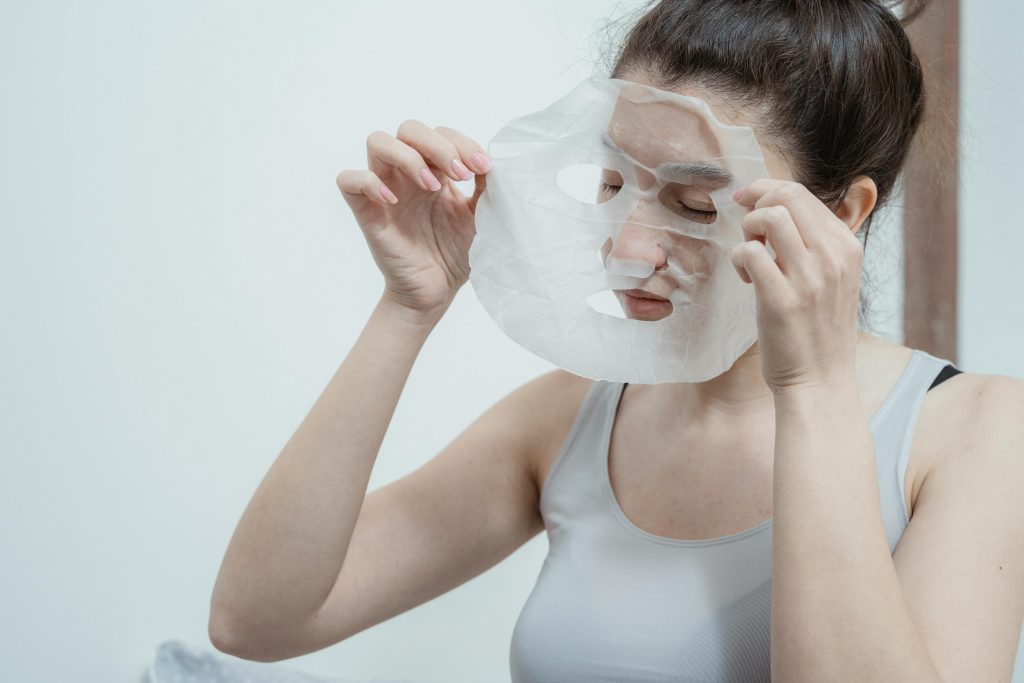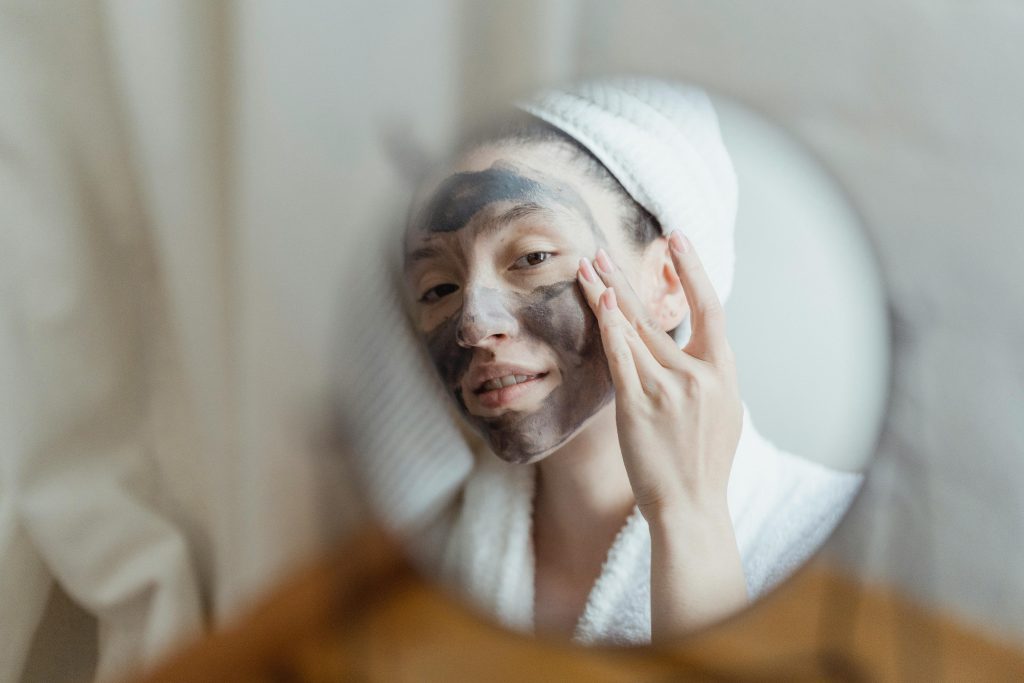Introduction
Have you ever stood in front of your bathroom mirror, frustrated by yet another skincare product that didn’t deliver the promised results? You’re not alone. Every week, I meet clients who’ve spent hundreds of pounds on products that just don’t work for them. The real problem? They’re using products that don’t match their skin type.
Understanding your skin type is like having a roadmap to beautiful skin. Without it, you’re essentially driving blindfolded through your skincare journey. After helping hundreds of clients through professional skin analysis sessions, I’ve seen how
this simple knowledge can transform not just your skin, but your confidence too.
Here’s the good news: identifying your skin type doesn’t have to be complicated. As a skin specialist with over 7 years of experience in UK aesthetics, I’m going to share my professional guidance on how to determine your exact skin type and build a routine that actually works. Whether you’re dealing with unexpected breakouts, persistent dry patches, or just feeling lost in the world of skincare, this guide will help you understand what your skin is trying to tell you.
By the end of this article, you’ll know exactly how to identify your skin type, choose the right products, and create a skincare routine that gives you the glowing results you deserve. No more guessing games – just clear, practical steps to your best skin ever.
The 5 Main Skin Types You Need to Know
Think of your skin type as your skin’s personality – each one needs different care to look its best. Let’s break down the five main types in a way that makes it easy to spot yours. Normal skin feels balanced – not too dry or oily – and rarely gives you trouble. It’s like the perfect cup of tea, just right! Dry skin often feels tight and might look flaky, especially after washing. It’s telling you it needs more moisture, like a plant that needs water.
Oily skin is your skin’s way of being a bit too generous with natural oils. You might notice shine on your forehead, nose, and chin by lunchtime, and makeup seems to slide off easily. Combination skin is exactly what it sounds like – a mix of two worlds. Usually, you’ll have an oily T-zone with drier cheeks. Think of it as having two different skin types on one face! Sensitive skin is the drama queen of skin types – it reacts easily to new products and might get red or irritated quickly.
Want to know a quick way to check your type? Try the morning test. When you wake up, don’t wash your face right away. Instead, press a clean tissue against different parts of your face. The pattern of oil (or lack of it) on the tissue will give you big clues about your skin type. This simple test is just one of the professional assessment techniques we use in our skincare clinic.

How to Decode Your Own Skin (The Mirror Test)
Ready to become a skin detective? The mirror test is your first step to understanding your skin better, and it’s easier than you might think. Start your skin investigation first thing in the morning, before you wash your face or apply any products. This is when your skin is in its most natural state, giving you the clearest picture of what’s really going on.
Grab a few sheets of blotting paper (or even a clean tissue will do). Press them gently on different areas of your face – your forehead, nose, cheeks, and chin. Now, hold the paper up to the light. See any oil marks? The pattern tells you a lot about your skin type. Lots of oil everywhere? You’ve got oily skin. No oil at all? That’s dry skin. Oil in some places but not others? Hello, combination skin!
Here’s a common mistake many people make: they judge their skin based on how it looks after using products. That’s like trying to know what color a wall is when it’s already painted! For the most accurate results, do this test after a good night’s sleep, before any products touch your face. And remember, your skin type can change with seasons and age, so it’s worth checking every few months.
Your Skin Through the Seasons
Living in the UK means your skin faces a real weather rollercoaster! Our British weather can swing from cold and windy to warm and humid in the same week, and your skin notices every change. Think of your skin as a mood ring – it reacts to everything from chilly winter winds to summer humidity. In winter, even normally oily skin might feel tight and dry, while summer can make dry skin surprisingly greasy.
The signs that your skin type is shifting with the seasons are easy to spot once you know what to look for. Maybe your usual moisturizer suddenly feels too heavy, or you’re getting unexpected dry patches. These changes aren’t your skin being difficult – it’s actually being smart and adapting to the environment! The trick is learning to adapt your skincare routine just as cleverly.
Here’s what makes British weather extra challenging for our skin: the constant humidity changes, surprise temperature swings, and those infamous rainy days. But don’t worry – I’ll teach you how to weather-proof your skincare routine. The secret is having a flexible approach. Think of it like your wardrobe – you wouldn’t wear the same clothes all year round, so why use the same skincare routine?

Common Skin Type Mistakes to Avoid
Let’s talk about the skincare mistakes I see most often in my clinic – and trust me, we’ve all made them! The biggest one? Using products just because they worked for your friend or a social media star. Your skin is as unique as your fingerprint, and what works for someone else might not be right for you. I’ve seen so many clients damage their skin barrier by using products that weren’t meant for their skin type.
Another common mistake is thinking “more is better” when it comes to skincare. Over-treating your skin is like overwatering a plant – it does more harm than good. Your skin needs time to respond to treatments, and bombarding it with too many active ingredients can lead to irritation, redness, and breakouts. Sometimes, less really is more when it comes to achieving healthy skin.
The third mistake might surprise you – it’s not paying attention to how your lifestyle affects your skin. Everything from stress levels to sleep patterns, diet, and exercise can change how your skin behaves. Add in seasonal changes (hello, British weather!), and you’ve got a recipe for confusion if you’re not paying attention to these factors. Understanding these connections helps you make better choices for your skin.
Building Your Perfect Skincare Routine
Creating your perfect skincare routine doesn’t have to be complicated – it’s all about understanding what your skin needs at different times of the day. In the morning, focus on protection. Start with a gentle cleanser that matches your skin type, follow with a hydrating toner (if needed), and always finish with sunscreen. Yes, even on cloudy London days! Your morning routine is like putting on armor before facing the day.
Evening routines are your skin’s recovery time. This is when you want to focus on really cleaning away the day’s dirt and pollution, and giving your skin what it needs to repair itself overnight. Think of it as your skin’s dinner and bedtime routine all in one! Start with a thorough cleanse (double cleansing if you wear makeup), then add your treatment products like serums or night creams.
Weekly treatments are your skin’s special pamper sessions. This is where face masks, gentle exfoliants, and at-home treatments come in. But here’s the exciting part – professional treatments can take your results to the next level. From hydrofacials to chemical peels, these treatments can fast-track your way to your skin goals. Just make sure they’re right for your skin type and concerns.

When to Seek Professional Help
Sometimes, your skin needs more than just over-the-counter products and home care. But how do you know when it’s time to see a professional? Watch out for signs like persistent breakouts that won’t clear up, sudden changes in your skin that you can’t explain, or when your usual products stop working. These are all signals that it’s time for expert help.
During your first skin consultation, expect a thorough examination of your skin under special lighting. We’ll ask about your current routine, lifestyle, and any specific concerns you have. Think of it as a detective work session – we’re gathering all the clues to solve your skin mysteries! Don’t worry about feeling judged; we’re here to help, not criticize your current routine.
The benefits of getting professional analysis are game-changing. We use advanced tools to look deep into your skin’s health, seeing things that aren’t visible to the naked eye. This helps us create a truly personalized plan for your skin. Many of my clients tell me they wish they’d come in sooner! Professional guidance can save you time, money, and frustration by getting you on the right track from the start.

Your Action Plan for Healthy Skin
Now that you understand your skin type better, it’s time to take action! Start with small steps – you don’t need to change everything at once. Begin by doing the mirror test tomorrow morning and noting what you discover. Then, look at your current products. Do they match what you now know about your skin type?
Remember, your skincare journey is unique to you. What works for your skin today might need adjusting as seasons change or as your lifestyle shifts. Keep a simple diary of how your skin responds to different products and treatments. This will help you spot patterns and make better choices for your skin’s health.
Ready to transform your skin but feeling unsure where to start? I’m here to help! Send me an email at Nadia@nadbeautylab.com for personalized advice or to book a consultation. Together, we can create a skincare plan that works perfectly for your unique skin needs. Your journey to healthier, happier skin starts now!
FAQs
1. Q: How often should I reassess my skin type?
A: Check your skin type every season (about every 3-4 months) or when you notice significant changes in how your skin behaves.
2. Q: Can my skin type change over time?
A: Yes! Your skin type can change due to age, hormones, seasons, and lifestyle factors. That’s why regular assessment is important.
3. Q: What’s the most important skincare step for all skin types?
A: Sun protection is crucial for every skin type, even on cloudy UK days. It prevents damage and premature aging.
4. Q: How long should I try a new skincare routine before deciding if it works?
A: Give new products at least 4-6 weeks to show results, unless you experience irritation or allergic reactions.
5. Q: Is expensive skincare always better?
A: No, expensive doesn’t always mean better. What matters most is choosing products that match your skin type and concerns.
6. Q: How can I tell if my skin is dehydrated or just dry?
A: Dehydrated skin lacks water and feels tight but might still produce oil. Dry skin lacks oil and feels rough or flaky.
7. Q: Should I use different products in summer and winter?
A: Yes, most people benefit from adjusting their routine seasonally. Lighter products in summer, richer ones in winter.
8. Q: How do I know if I’m over-treating my skin?
A: If your skin feels sensitive, tight, or irritated, or shows signs of redness, you might be using too many active ingredients.
9. Q: When is the best time to book a professional skin consultation?
A: Book a consultation when you’re unsure about your skin type, dealing with persistent issues, or want to start a new treatment plan.
10. Q: What’s the minimum skincare routine I need?
A: At minimum, use a gentle cleanser, moisturizer, and sunscreen that match your skin type. Add treatments based on your specific needs.
Need more personalized advice? Don’t hesitate to reach out at Nadia@nadbeautylab.com. I’m here to help you achieve your best skin ever!

